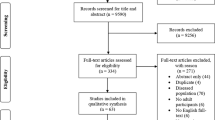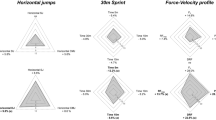Abstract
Background and aims: The foot provides the only direct contact with supporting surfaces and therefore plays an important role in all postural tasks. Changes in the musculoskeletal and neurological characteristics of the foot with advancing age can alter plantar loading patterns and postural balance. Several studies have reported that exercise training improves postural performance in elderly individuals. The aim of our study was to investigate the effectiveness of a dynamic balance training protocol performed for 5 weeks on the support surface, percentage distribution of load in both feet, and body balance performance in healthy elderly women. Methods: Ten subjects (68.67±5.50 yrs old; 28.17±3.35 BMI) were evaluated with a monopodalic performance test and baropodometric analyses before and after the training period. Results: We found a significant improvement in balance unipedal performance times on left and right foot by 20.18% and 26.23% respectively (p<0.05). The support surface of the right foot significantly increased in response to the training protocol and, in particular, in both forefoot and rearfoot regions (p<0.05). In addition, before the training period, load distribution on the left foot was greater than on the right one; equal load redistribution was measured on both feet in response to exercise (p>0.05). Conclusions: The increased support surface and equal redistribution of body weight on both feet obtained in response to our training protocol may be postural adaptations sufficient to improve static balance in elderly women.
Similar content being viewed by others
References
Wernick-Robinson M, Krebs DE, Giorgetti MM. Functional reach: does it really measure dynamic balance? Arch Phys Med Rehabil 1999; 80: 262–9.
Choy NL, Brauer, S, Nitz J. Changes in postural stability in women aged 20 to 80 years. J Gerontol A Biol Sci Med Sci 2003; 58: 525–30.
Scott G, Menz HB, Newcombe L. Age-related differences in foot structure and function. Gait Posture 2007; 26: 68–75.
Harvey I, Frankel S, Marks R, Shalom D, Morgan M. Foot morbidity and exposure to chiropody: Population based study. BMJ 1997; 315: 1054–5.
Benvenuti F, Ferrucci L, Guralnik JM, Gangemi S, Baroni A. Foot pain and disability in elderly persons: an epidemiologic survey. J Am Geriatr Soc 1995; 43: 479–84.
Era P, Heikkinen E. Postural sway during standing and unexpected disturbance of balance in random samples of men of different ages. J Gerontol 1985; 40: 287–95.
Crilly RG, Delaquerrière-Richardson L, Roth JH, Vandervoort AA, Hayes KC, Mackenzie RA. Postural stability and Colles’ fracture. Age Ageing 1987; 16: 133–8.
Tinetti ME, Speechley M, Ginter SF. Risk factors for falls among elderly persons living in the community. N Engl J Med 1988; 319: 1701–7.
Sattin RW, Lambert Huber DA, DeVito CA et al. The incidence of fall injury events among the elderly in a defined population. Am J Epidemiol 1990; 131: 1028–37.
Wolfson L, Whipple R, Derby CA, Amerman P, Nashner L. Gender differences in the balance of healthy elderly as demonstrated by dynamic posturography. J Gerontol 1994; 49: M160–7.
Butler AA, Menant JC, Tiedemann AC, Lord SR. Age and gender differences in seven tests of functional mobility. J Neuroeng Rehabil 2009; 30: 6–31.
Aijö M, Heikkinen E, Schroll M, Stehen B. Physical activity and mortality of 75-year-old people in three Nordic localities: a fiveyear follow-up. Aging Clin Exp Res 2002; 14 (Suppl 3): 83–9.
Unsworth J, Mode A. Preventing falls in older people: risk factors and primary prevention through physical activity. Br J Community Nurs 2003; 8: 214–20.
Rogers ME, Fernandez JE, Bohlken RM. Training to reduce postural sway and increase functional reach in the elderly. J Occup Rehabil 2001; 11: 291–8.
Ledin T, Kronhed AC, Möller C, Möller M, Odkvist LM, Olsson B. Effects of balance training in elderly evaluated by clinical tests and dynamic posturography. J Vestib Res 1990–1991; 1: 129–38.
Judge JO, Lindsey C, Underwood M, Winsemius D. Balance improvements in older women: effects of exercise training. Phys Ther 1993; 73: 254–62.
Crilly RG, Willems DA, Trenholm KJ, Hayes KC, Delaquerrière- Richardson LF. Effect of exercise on postural sway in the elderly. Gerontology 1989; 35: 137–43.
Topp R, Mikesky A, Dayhoff NE, Holt W. Effect of resistance training on strength, postural control, and gait velocity among older adults. Clin Nurs Res 1996; 5: 407–27.
Bellew JW, Yates JW, Gater DR. The initial effects of low-volume strength training on balance in untrained older men and women. J Strength Cond Res 2003; 17: 121–8.
Ripani M, Ciccarelli A, Morini S, Ricciardi G, Michielon G. Evaluation of foot support in rugby players: a baropodometric analysis. Sport Sci Health 2006; 1: 104–8.
Tanaka T, Takeda H, Izumi T, Ino S, Ifukube T. Effects on the location of the centre of gravity and the foot pressure contribution to standing balance associated with ageing. Ergonomics 1999; 42: 997–1010.
Rodgers MM. Dynamic foot biomechanics. J Orthop Sports Phys Ther 1995; 21: 306–16.
Hurvitz EA, Richardson JK, Werner RA, Ruhl AM, Dixon MR. Unipedal stance testing as an indicator of fall risk among older outpatients. Arch Phys Med Rehabil 2000; 81: 587–91.
Sakamoto K, Nakamura T, Hagino H et al. Committee on Osteoporosis of The Japanese Orthopaedic Association. Effects of unipedal standing balance exercise on the prevention of falls and hip fracture among clinically defined high-risk elderly individuals: a randomized controlled trial. J Orthop Sci 2006; 11: 467–72.
Hue OA, Seynnes O, Ledrole D, Colson SS, Bernard PL. Effects of a physical activity program on postural stability in older people. Aging Clin Exp Res 2004; 16: 356–62.
Lord SR, Menz HB. Visual contributions to postural stability in older adults. Gerontology 2000; 46: 306–10.
Collins JJ, De Luca CJ, Burrows A, Lipsitz LA. Age-related changes in open-loop and closed-loop postural control mechanisms. Exp Brain Res 1995; 104: 480–92.
Prokop T, Berger W, Zijlstra W, Dietz V. Adaptational and learning processes during human split-belt locomotion: interaction between central mechanisms and afferent input. Exp Brain Res 1995; 106: 449–56.
Author information
Authors and Affiliations
Corresponding author
Rights and permissions
About this article
Cite this article
Battaglia, G., Bellafiore, M., Bianco, A. et al. Effects of a dynamic balance training protocol on podalic support in older women. Pilot Study. Aging Clin Exp Res 22, 406–411 (2010). https://doi.org/10.1007/BF03337736
Received:
Accepted:
Published:
Issue Date:
DOI: https://doi.org/10.1007/BF03337736




